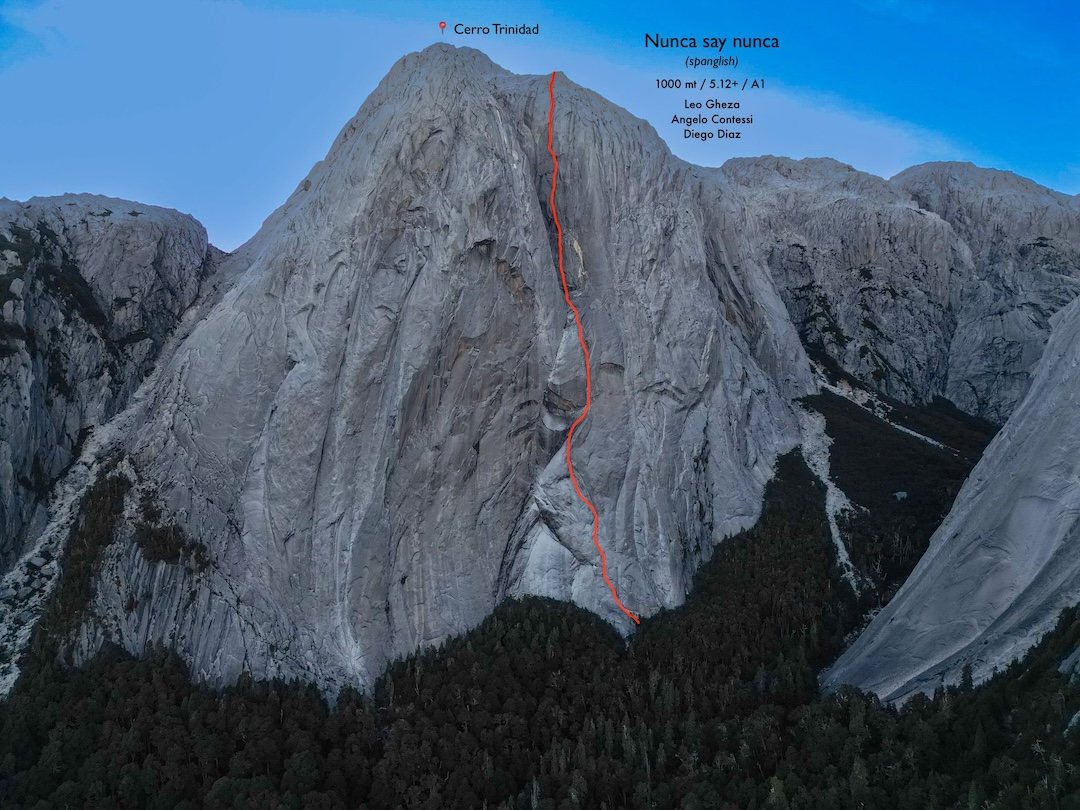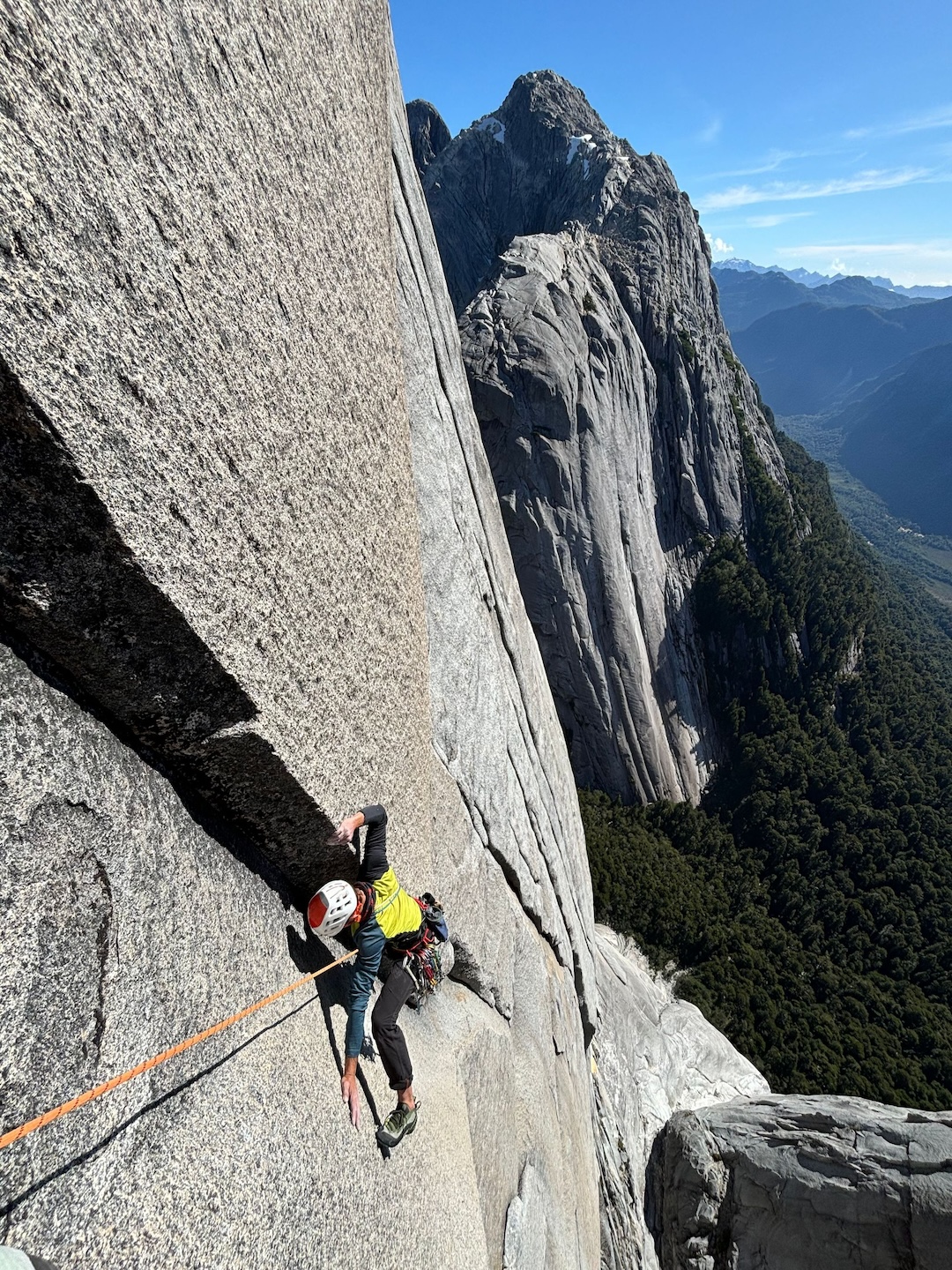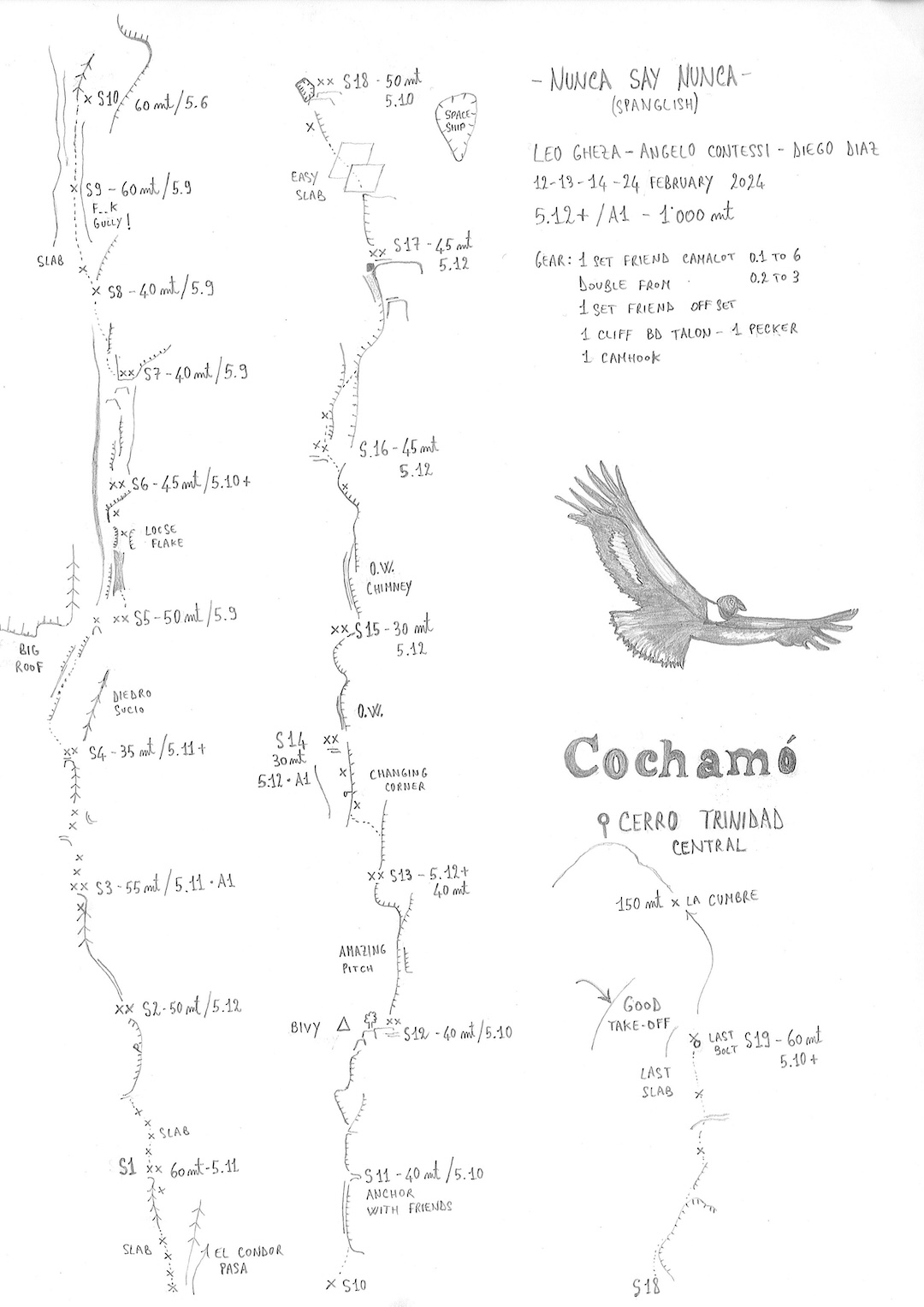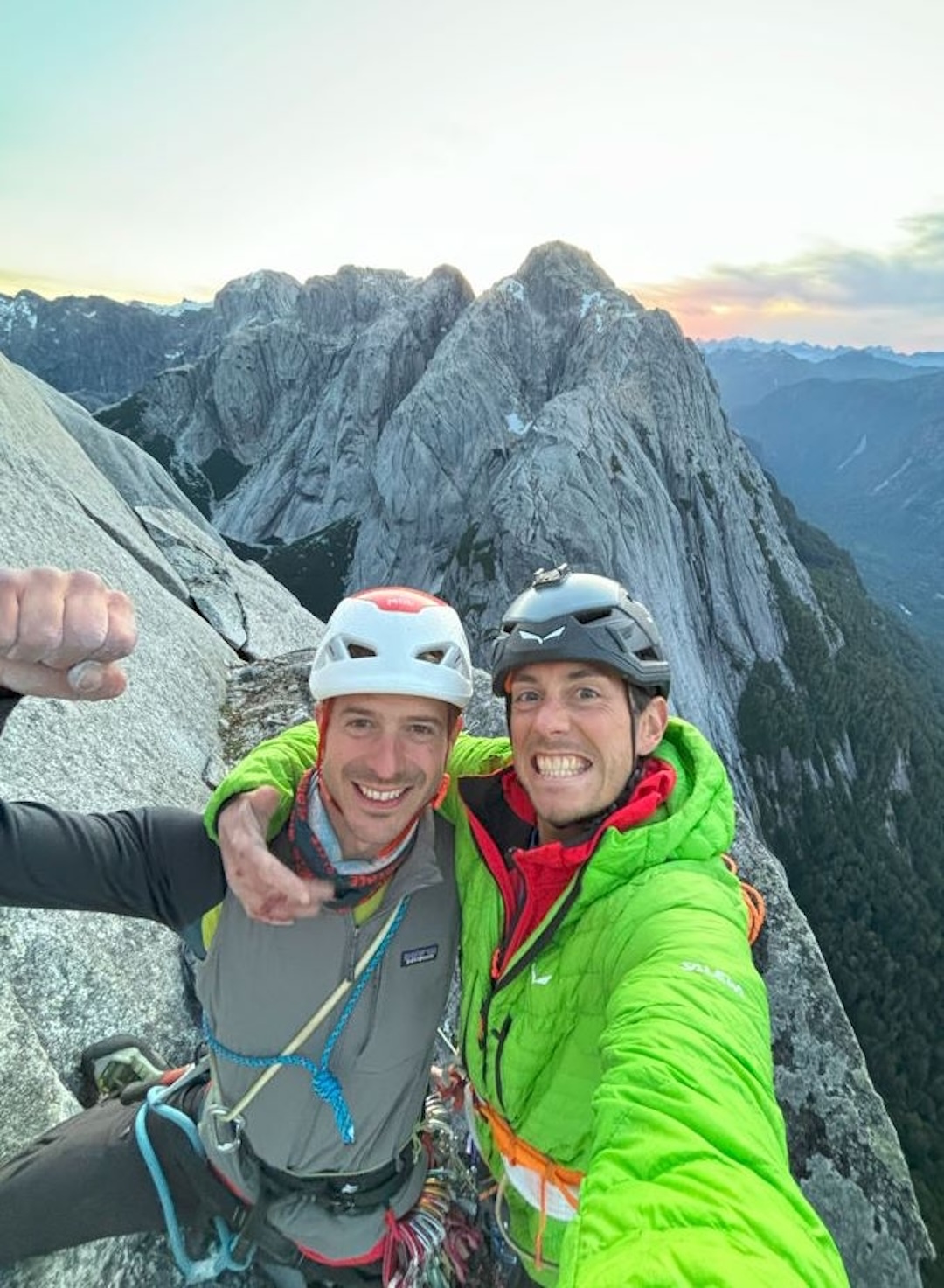Cerro Trinidad Central, Northwest Face, Nunca Say Nunca
Chile, Northern Patagonia, Cochamó
After a reconnaissance in February 2023, Diego Diaz Aguilera (Chile), Angelo Contessi (Italy), and I returned to Cochamó in 2024 to begin a project in the heart of the valley. Our plan was to establish a new route up the northwest face of Cerro Trinidad Central, an 800m monolith.

With about 200kg of food and gear, we loaded horses and set off. By February 7, we were at the wall, but then we encountered a big problem: The line we wanted to open had already been opened! [It’s not clear what climb the author observed; local expert Daniel Seeliger said there had been an attempt in this area in the early 2000s but was not aware of a completed route.] Fortunately, I had a Plan B: a potential line to the left of El Cóndor Pasa (710m, 5.13d), which I’d spotted during a paraglider flight a few days before. This new line was a little more exposed to rockfall than our original goal, but we decided it was a manageable risk.
We immediately used a good three-day window, from February 12 to 14, to open the first 500m, winding between technical slabs, cracks, and some artificial steps (probably freeable, but very hard). The rock was consistently solid. The lower slabs ranged between 5.11 and 5.12, but after a big roof above pitch five, the difficulty lessened to 5.9 and 5.10. This middle section led into an 80m gully on pitch nine, where Diego took a 20m fall. Fortunately, nothing was broken, but he was too bruised and cut up to continue. We helped him out as some bad weather descended.
Returning on February 24, Angelo and I jugged up our fixed lines and opened the second half of the route, another 450m, following an obvious system of sustained, vertical 5.12 cracks, with a couple of easier slabs near the top. This upper portion was exceptionally beautiful.
We reached the top around 9:30 p.m. on the 24th, with a full moon and clear sky overhead, and bivouacked 100m below the true summit, knowing that Diego was with us in spirit. The following morning, I “raised anchors” with my paraglider under perfect wind, and in 15 minutes I was at the bottom of the valley, landing directly inside our campsite. Angelo, meanwhile, took four hours to descend on foot. Perhaps I owe him a few beers.
We dubbed our 19-pitch line Nunca Say Nunca (1,000m of climbing, 5.12+ A1). The route went free save for aid on the third and 13th pitches. (The latter we dubbed the Changing Corners of Trinidad Central, due to the similarities with the infamous pitch on the Nose of El Capitan.) Ultimately, the free ascent wasn’t held up as much by difficulty as it was by time. I believe it’s possible to free the whole route, and we hope it will remain a free project for the new generations.
Opening a 1,000m route and taking off from the summit via paraglider is a memory I will never forget. Of course, we often forget the bad and remember the good. As they say here, Buena onda!
—Leo Gheza, Italy




